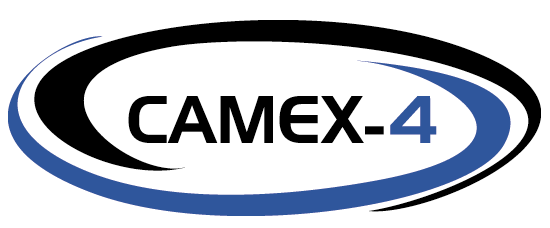
The Convection And Moisture EXperiment (CAMEX) was a series of field research investigations sponsored by the Earth Science Enterprise of the National Aeronautics and Space Administration (NASA). The fourth field campaign in the CAMEX series (CAMEX-4) was held in 16 August - 24 September, 2001 and was based out of Jacksonville Naval Air Station, Florida.
 CAMEX-4 was focused on the study of tropical cyclone (hurricane) development, tracking, intensification, and landfalling impacts using NASA-funded aircraft and surface remote sensing instrumentation. The primary aircraft used during CAMEX-4 were the NASA DC-8 and ER-2 research airborne platforms. These instrumented aircraft flew over, through, and around selected hurricanes as they approached landfall in the Caribbean, Gulf of Mexico, and along the east coast of the United States. The NASA aircraft investigated upper altitude regions of the hurricane not normally sampled. Where possible, measurements were compared and validated with coincident observations from the QuikSCAT, Terra, and Tropical Rainfall Measuring Mission satellites. This study yielded high spatial and temporal information of hurricane structure, dynamics, and motion. These data, when analyzed within the context of more traditional aircraft, satellite, and ground-based radar observations, provided additional insight to hurricane modelers and forecasters who continually strive to improve hurricane predictions. More accurate hurricane predictions at landfall resulted in decreasing the size of necessary coastal evacuations and increasing the warning time for those areas.
CAMEX-4 was focused on the study of tropical cyclone (hurricane) development, tracking, intensification, and landfalling impacts using NASA-funded aircraft and surface remote sensing instrumentation. The primary aircraft used during CAMEX-4 were the NASA DC-8 and ER-2 research airborne platforms. These instrumented aircraft flew over, through, and around selected hurricanes as they approached landfall in the Caribbean, Gulf of Mexico, and along the east coast of the United States. The NASA aircraft investigated upper altitude regions of the hurricane not normally sampled. Where possible, measurements were compared and validated with coincident observations from the QuikSCAT, Terra, and Tropical Rainfall Measuring Mission satellites. This study yielded high spatial and temporal information of hurricane structure, dynamics, and motion. These data, when analyzed within the context of more traditional aircraft, satellite, and ground-based radar observations, provided additional insight to hurricane modelers and forecasters who continually strive to improve hurricane predictions. More accurate hurricane predictions at landfall resulted in decreasing the size of necessary coastal evacuations and increasing the warning time for those areas.
While remote sensing of the hurricane environment was the primary objective of CAMEX-4, there were also separate flights to study thunderstorm structure, precipitation systems, and atmospheric water vapor profiles. This portion of CAMEX-4 is known as KAMP, Keys Area Microphysics Project. The objective of the KAMP flights was to improve quantitative precipitation estimates from passive and active microwave instruments.
The DC-8 was based at Naval Air Station Jacksonville, Florida. Aircraft operations were within a 1500 nm radius of Jacksonville. The KAMP flights were approximately 300 nm from the air station near Key West Florida. The NASA DC-8 and ER-2 were the primary aircraft platforms for CAMEX-4. NASA also funded the flight of several unmanned aerial vehicles called the AEROSONDE.
Dr. Ramesh Kakar (Program Manager for Atmospheric Dynamics and Remote Sensing at NASA Headquarters) was the CAMEX-4 sponsor. CAMEX-4 was conducted in collaboration with the National Oceanic and Atmospheric Administration (NOAA) Hurricane Research Division and the United States Weather Research Program (USWRP).
EDOP nadir radar reflectivity (left) and Doppler velocity (right) in an east-west section across the Dominican Republic and its main mountain ridge around 23:15 UTC on 22 September 1998. The Doppler velocity includes both air motion and hydrometeor fallspeed. This image was taken during the CAMEX-3 field experiment.
DOI:
http://dx.doi.org/10.5067/CAMEX-4/DATA101







